Tanzania is the land of the ultimate safaris. In it’s beautiful National Parks it is possible to see incredibly large numbers of wildlife in a short time. World famous are the Serengeti and the Ngorongoro crater. In addition to the famous Big Five, the extensive National Parks guarantee great landscapes. The annual migration of hundreds of thousands of wildebeest and zebras is one of the largest migrations of wildlife on earth.
Tanzania is also known for its rich culture, the snowy mountaintop of Kilimanjaro and exotic Zanzibar.
The super friendly population, divided into 120 different tribes and cultures, lives in harmony with each other.
A Tanzania trip means seeing wildlife, sleeping in a tented camp with western comfort in the middle of a National Park, encounters with local people, hiking & cycling in nature and relaxing on tropical beaches. A trip through Tanzania is a once in a lifetime experience.
Facts
- Capital - Dodoma
- Largest city - Dar es Salaam
- Currency - Tanzanian Shilling
- Population - about 56 million (the figures vary considerably)
- Tribes - 120 tribes of which the Maasai is the most famous tribe
- Languages - Swahili and English
- Land area - 945,087 square kilometres (23x the size of the Netherlands, 31x Belgium)
- National Parks - 17
- The country has measured the highest animal density in the world per square kilometre
- Neighbouring countries - Kenya, Uganda, Congo, Rwanda, Burundi, Zambia, Malawi and Mozambique
- Highest point - Kilimanjaro 5,895 meters
- Time difference – Tanzania is GMT/UTC +3h Standard Time
- Most famous attractions - Serengeti National Park, Ngorongoro Crater, Kilimanjaro and Zanzibar
Arusha is known as the safari capital of Tanzania and is just an hour's drive from Kilimanjaro Airport. Situated at the foot of the majestic Mount Meru – with the imposing Kilimanjaro in the background – Arusha is an ideal base for safaris in the northern national parks.
The city is also called 'the heart of Africa', because it is supposedly located exactly halfway between Cape Town and Cairo – although the actual midpoint is 25 kilometres outside the city. Arusha is known to the locals as "A' Town". At an altitude of around 1,400 metres, you can enjoy a pleasant climate and predominantly green surroundings here, making Arusha the perfect place to acclimatise and relax before going on safari.
Arusha is vibrant and lively, with a colourful streetscape and friendly, hospitable people. Although the city does not have any 'must-see' tourist highlights, it is certainly worth taking a walk through the city and its surroundings on your own. During the day, it’s safe here and every corner offers new surprises.
Tourist attractions in Arusha
Cultural Heritage Center: A large, free art gallery full of inspiring artwork.
Sokoine Road: The lively main street with the local fruit and vegetable market.
Maasai Market: Ideal for souvenirs, from wooden statues to jewelry. Be warned, haggling is a must here.
National History Museum: An interesting museum with a wing dedicated to human evolution.
Shanga: A unique workplace for people with disabilities, where beautiful, sustainable products are made from recycled materials. After a free tour of the workshop, you can also visit the shop.
Restaurant tips in Arusha
Arusha offers a varied culinary offering, from authentic local dishes to international cuisines. Here are some of our favorites:
🍛 Amber Restaurant – Located in the center of Arusha, this Indian restaurant serves a wide range of delicious meals, with many vegetarian and vegan options.
🌄 Blue Heron – On the outskirts of Arusha, enjoy a beautiful view of Mount Meru, while experiencing Western flavors in an African ambiance.
☕ Kitamu Café – The perfect place for a delicious Tanzanian coffee, combined with exotic cakes, local specialties and a warm, friendly atmosphere.
🍴 George Taverne – This Greek restaurant in the center offers an extensive intercontinental menu. Ideal for a relaxed lunch or dinner in a cozy garden.
🏨 Gran Melia – The most luxurious hotel in Arusha City, where you can enjoy a great view of the city from the roof terrace - as if you were in a large European metropolis.
🥗 Sanaa Coffeeshop – For tasty salads, juices, sandwiches and cakes in a relaxed setting.
☕ Kahawa Coffee Shop – Located on the grounds of Arusha Coffee Lodge and Shanga, where you can enjoy delicious coffee, cakes and juices. There’s even a chance to spot monkeys!
🍽 Local food – Authentic Tanzanian food is everywhere in town, such as wali maharage (rice and beans), pilau (spiced rice with vegetables), samosas or chapati (a type of pancake). If you see lots of local Tanzanians dining there, you know you’re in good hands.

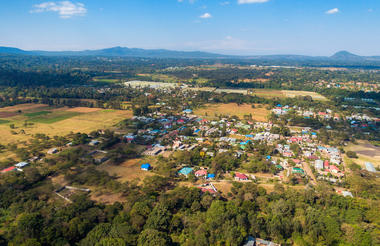

Situated in northern Tanzania, Tarangire National Park is a breathtaking safari destination famed for its dramatic landscapes and exceptional wildlife. Dominated by ancient baobab trees and the life-giving Tarangire River, the park provides sanctuary for vast herds of elephants, zebra, and wildebeest, alongside smaller groups of giraffe and impala, especially during the dry season when animals gather in extraordinary numbers. Travellers can look forward to thrilling game drives that reveal lion, leopard, and even cheetah, together with more than 500 bird species that make the skies shimmer with colour and sound. Unlike busier safari parks, Tarangire offers a more tranquil, intimate atmosphere, allowing visitors to truly connect with nature. Its sweeping vistas, rich biodiversity, and sense of untamed wilderness make it an unmissable highlight of any Tanzanian adventure.

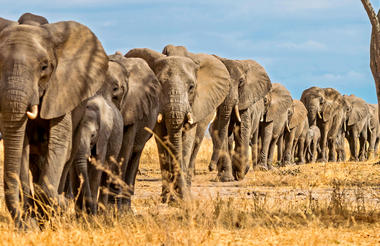

Situated in Tanzania’s central-northern region with the Lake Manyara to its east and the Manyara Escarpment to its west, the Lake Manyara National Park offers breathtaking views and a large variety of habitats supporting an array of wildlife. This small park is home to surprising biodiversity and features a magnificent landscape of acacia woodlands, forests, baobab strewn cliffs, algae-streaked hot springs, swamps and the lake itself. The park supports over 400 species of bird and the largest concentration of baboons anywhere in the world. Other species to spot include giraffes, zebras, wildebeest, impala, waterbuck, warthog, the Cape clawless otter, and the Egyptian mongoose. Don’t miss the opportunity to see thousands of flamingos on the lake, the renowned tree-climbing lions, and large families of elephants strolling through the forest.
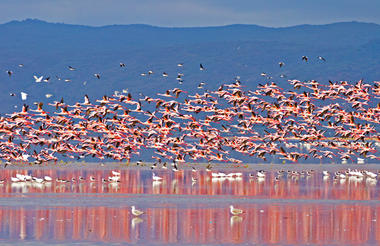
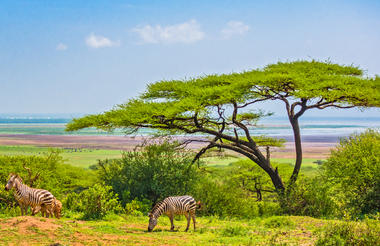
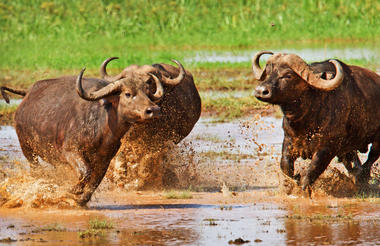
Situated in the heart of Tanzania, the Central Serengeti encompasses the world-famous Seronera Valley which is known for its prime wildlife-viewing opportunities. This picture-perfect landscape is characterised by endless stretches of savannah-covered open plains interspersed by rocky outcrops of granite and scattered with acacia woodlands and covered in a network of rivers and streams. The Central Serengeti forms part of the great wildebeest and zebra migration and provides an ideal habitat for a variety of wildlife such as giraffe, impala, waterbuck, hippo, elephant, buffalo, lion, leopard, hyena, jackal, serval and much more. Popular activities include: game viewing, cultural tours, horse riding safaris, and hot air ballooning over the spectacularly scenic terrain.
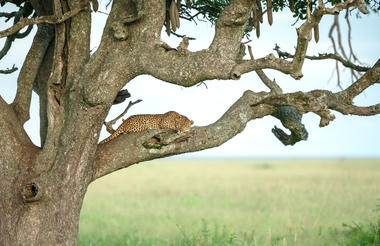
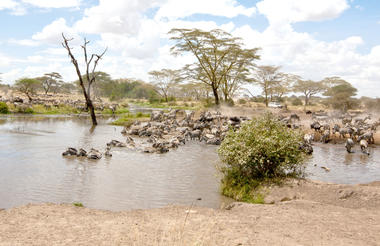
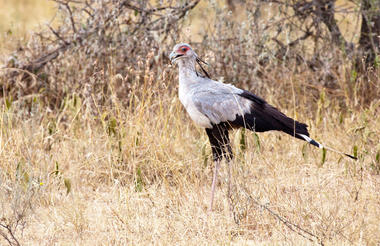
Situated in the Crater Highlands in Northern Tanzania, the Ngorongoro Conservation Area is best known for its archaeological and geological significance, rich wildlife, and beautiful scenery. The conservation area encompasses the famous Crater, the renowned Olduvai Gorge and vast plains of grasslands, forests and mountains extending to the Serengeti. This 8000-square-kilometre protected area is recognised for its natural beauty and has been placed on the UNESCO World Heritage List. Visitors flock here to soak up the spectacular views of the Ngorongoro Crater, voted as one of the Seven Natural Wonders of Africa, it is famed for its natural beauty and abundant wildlife. Popular activities include: mountain biking, hiking, game drives, bush walks, and visiting a local Maasai village.








